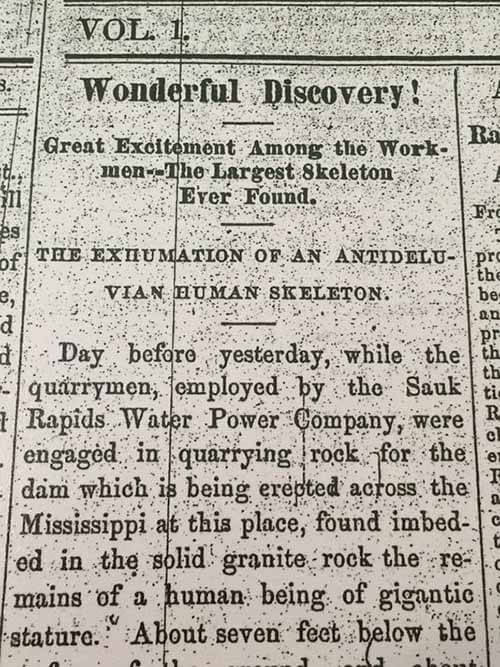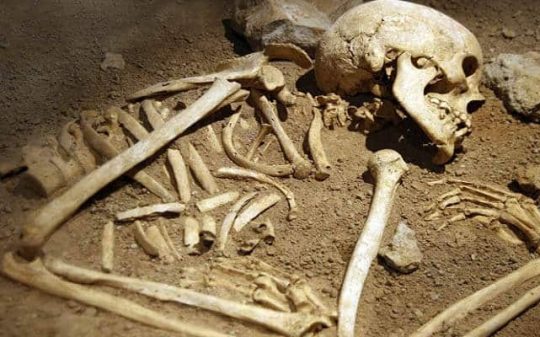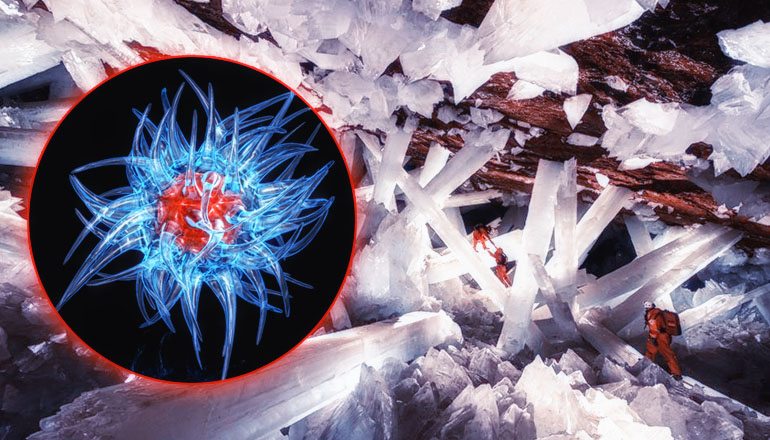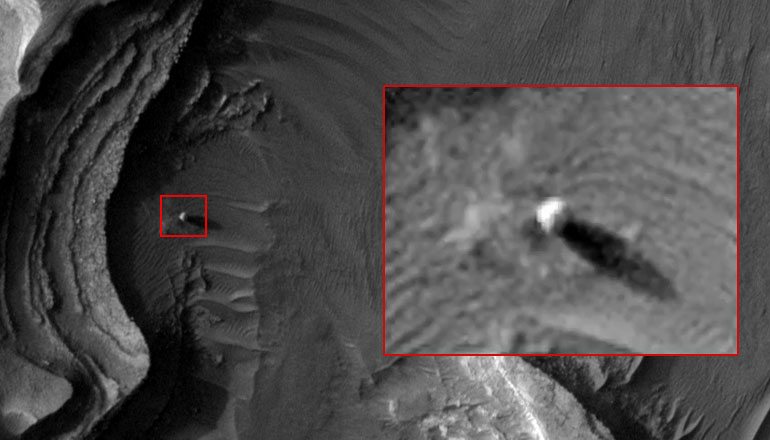An 1868 newspaper article trumpeting the discovery of a giant skeleton continues to mystify the city of Sauk Rapids, Minnesota.
Nearly 150 years ago, a report surfaced that quarry workers with the Sauk Rapids Water Power Co. unearthed the remains of a 10-foot-tall giant along the shores of the Mississippi River.
The story was printed on the front page of the Sauk Rapids Sentinel on Dec. 18, 1868, under the headline, “Wonderful Discovery!” where authors touted the remains as the “largest skeleton ever found.”
A few days later, the bones were nowhere to be found, rumored to have been whisked east on a late-night train and sold to the circus.
So what happened to these giant bones? Were they part of a publicity scheme, or dreamed up by a local reporter?

Wonderful Discovery! story:
The water company employees reportedly discovered the bones while quarrying rock for a dam near the present day site of Lions Park, between the Sauk Rapids Bridge and the former bridge site.
According to the story, the workers found embedded “in solid granite rock the remains of a human being of gigantic stature.”
The grave — reported as being 12 feet long, 4 feet wide and 3 feet deep — was estimated to be about 2 feet below the level of the river. Atop the tomb, the report said, was a flat limestone rock that remained separate from the surrounding granite.
The remains are completely petrified, and are of gigantic dimensions,” the story states. The head is massive, measures thirty-one and one-half inches in circumference, but low in theosfrontis, and very flat on top.
The story offers additional dimensions, such as a 26¼-inch femur, a 25½-inch fibula and more than 59 inches for the measurement around the chest. The skeleton measured 10 feet, 9½ inches from the “crown of the head to the sole of the foot.”
Reporters estimated the “giant” would have weighed at least 900 pounds “when covered with a reasonable amount of flesh.”
The story also said parts of the skeleton were missing: the thumb and fingers of the left hand, as well as the left foot from the ankle to the toes.
We are not sufficiently posted either in geology or ethnology to form even a conjecture; and hence we shall leave it to some one (sic) more learned than we, to solve the problem, the authors stated.
The story stated the bones were in the possession of a gentleman traveling east. The unnamed gentleman supposedly sent the remains to Boston.
Possibly we may hear all that can be said on the subject, by the learned in these things, in a few days hence. It is surmised by some that he will make a nice thing by selling them to some one who will exhibit them to an astonished world.
The story ends on an expectant note: “If it should happen that this should turn out to be an antideluvian grave yard, the world will have food for reflection for the next century.”
The reporters seemed to be convinced of the validity of the marvelous discovery. But residents of Sauk Rapids complained they were left in the dark.
A story from the Dec. 25, 1868, edition of the Sauk Rapids Sentinel follows the mystery surrounding the skeleton.
When the account of the wonderful discovery of the remains of a gigantic human being, which appeared in our last was penned, we were not aware that the majority of our very townspeople had not seen them,” the story states. They now complain that they were so surreptitiously taken away.
Nearly 150 years later, townspeople still do not know if the story was real or merely fiction, leading to spirited debate over the veracity over the tale.
Museum director Mary Ostby argued to the St. Cloud Times that the detailed reporting of the skeleton’s measurements suggest it was a true story.
They couldn’t have got the details they got as a hoax,” she told the paper.
Fred Joesting, who has been a volunteer at the museum for 20 years, has more of a skeptical view of the skeleton story: “I think the majority of these things are hoaxes, but there are some that are real.However, the odds are much higher that it is a hoax”.
Whatever the case, the story of the Sauk Rapids skeleton has captivated the locals and researchers alike. (via sctimes.com)









